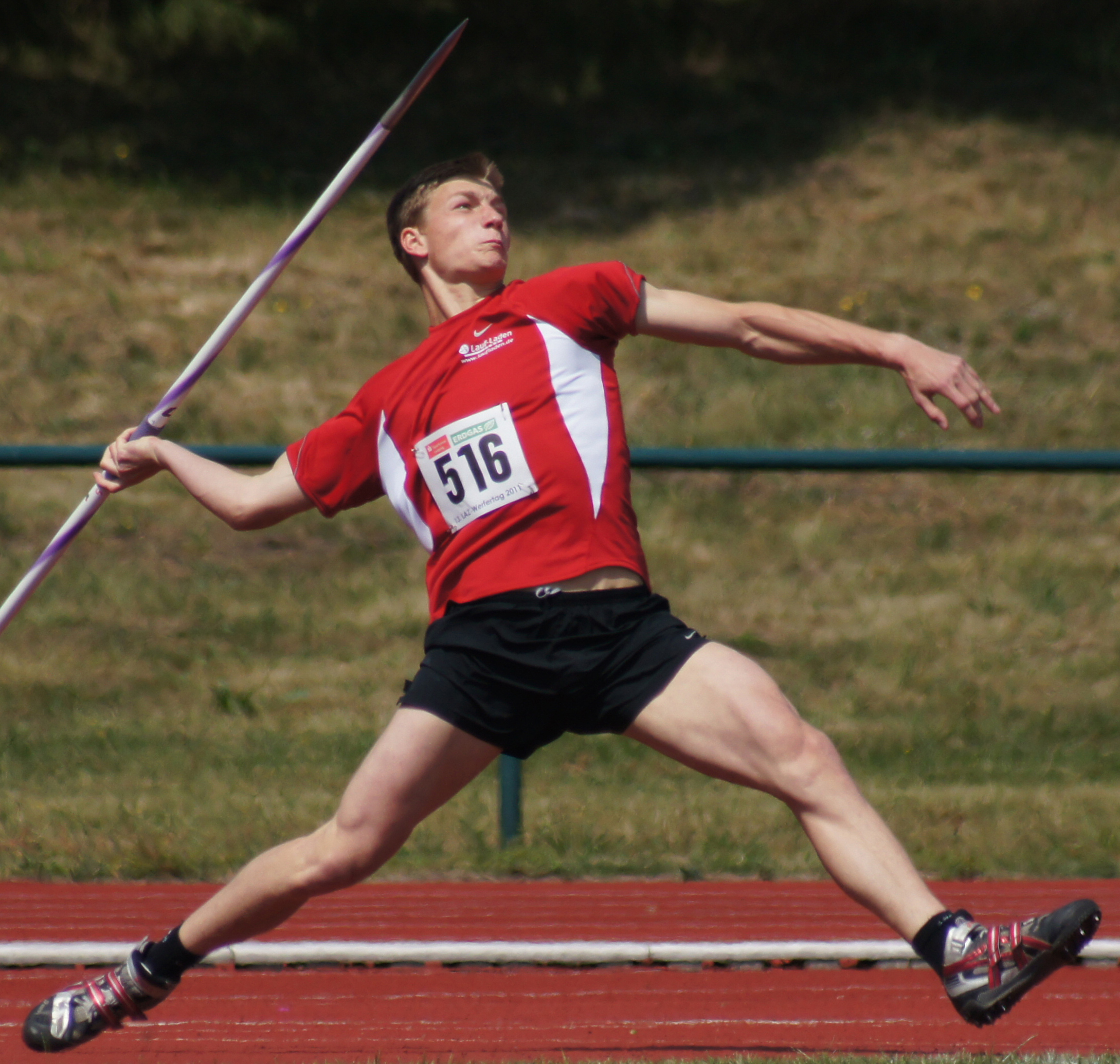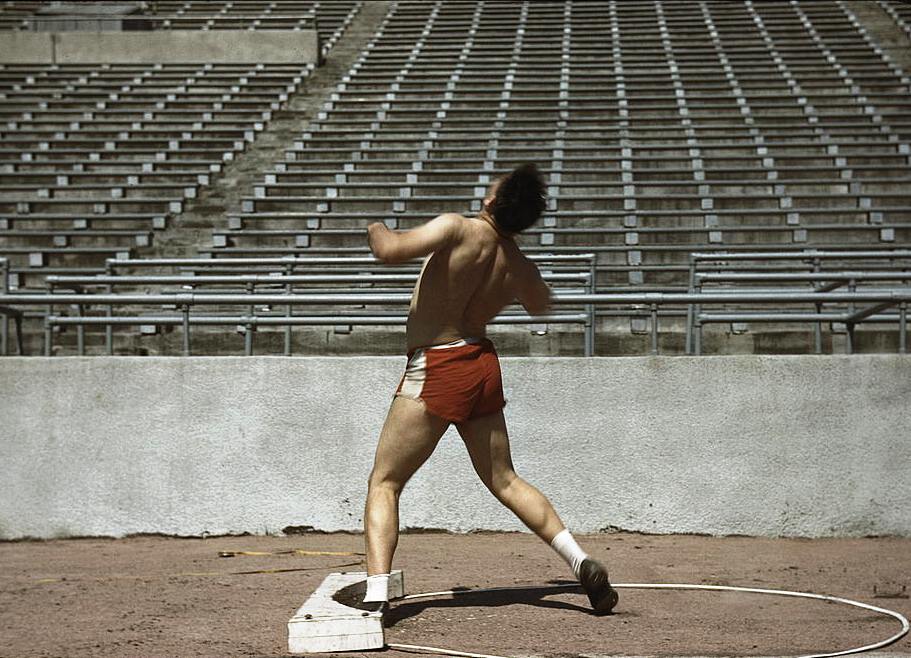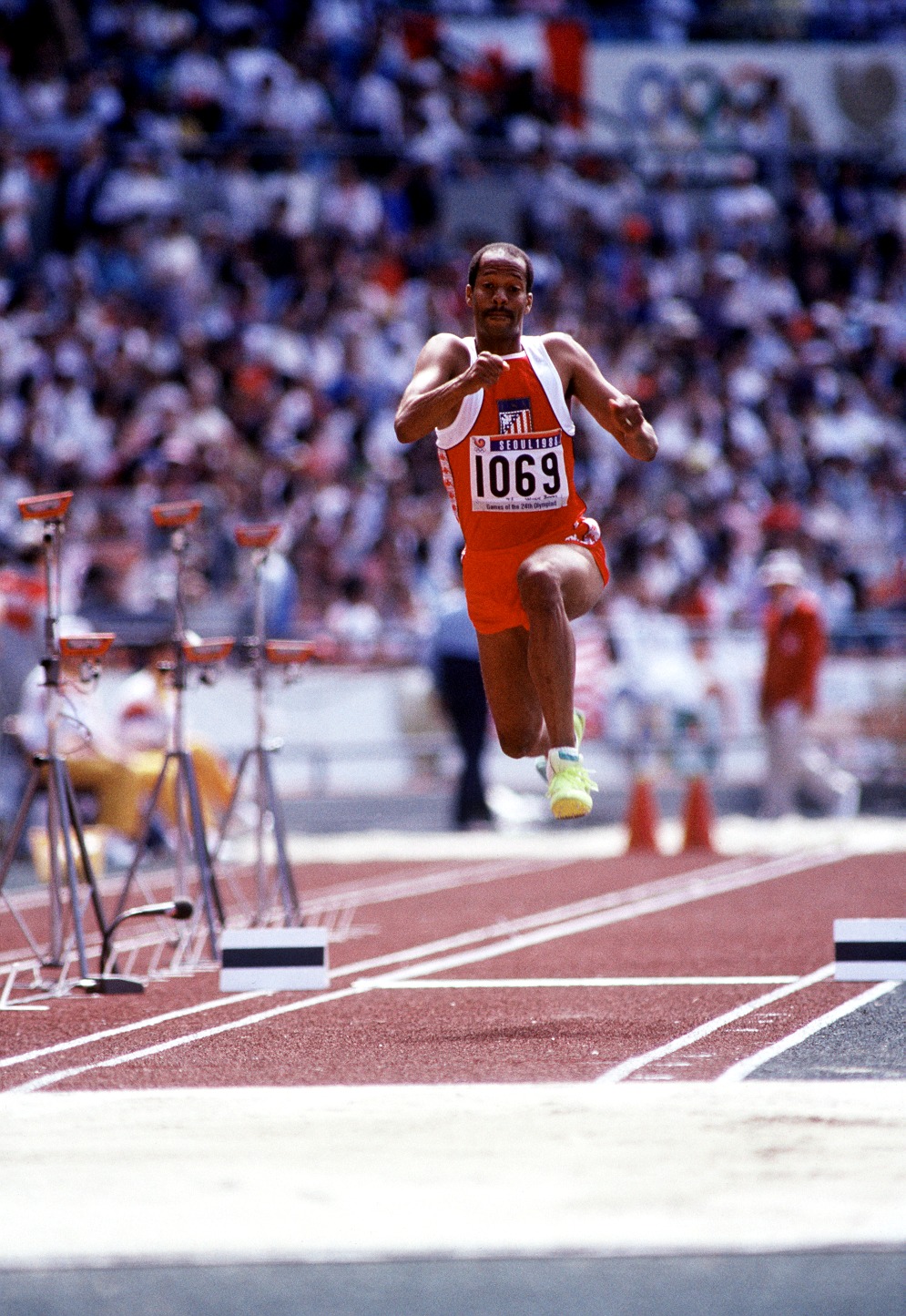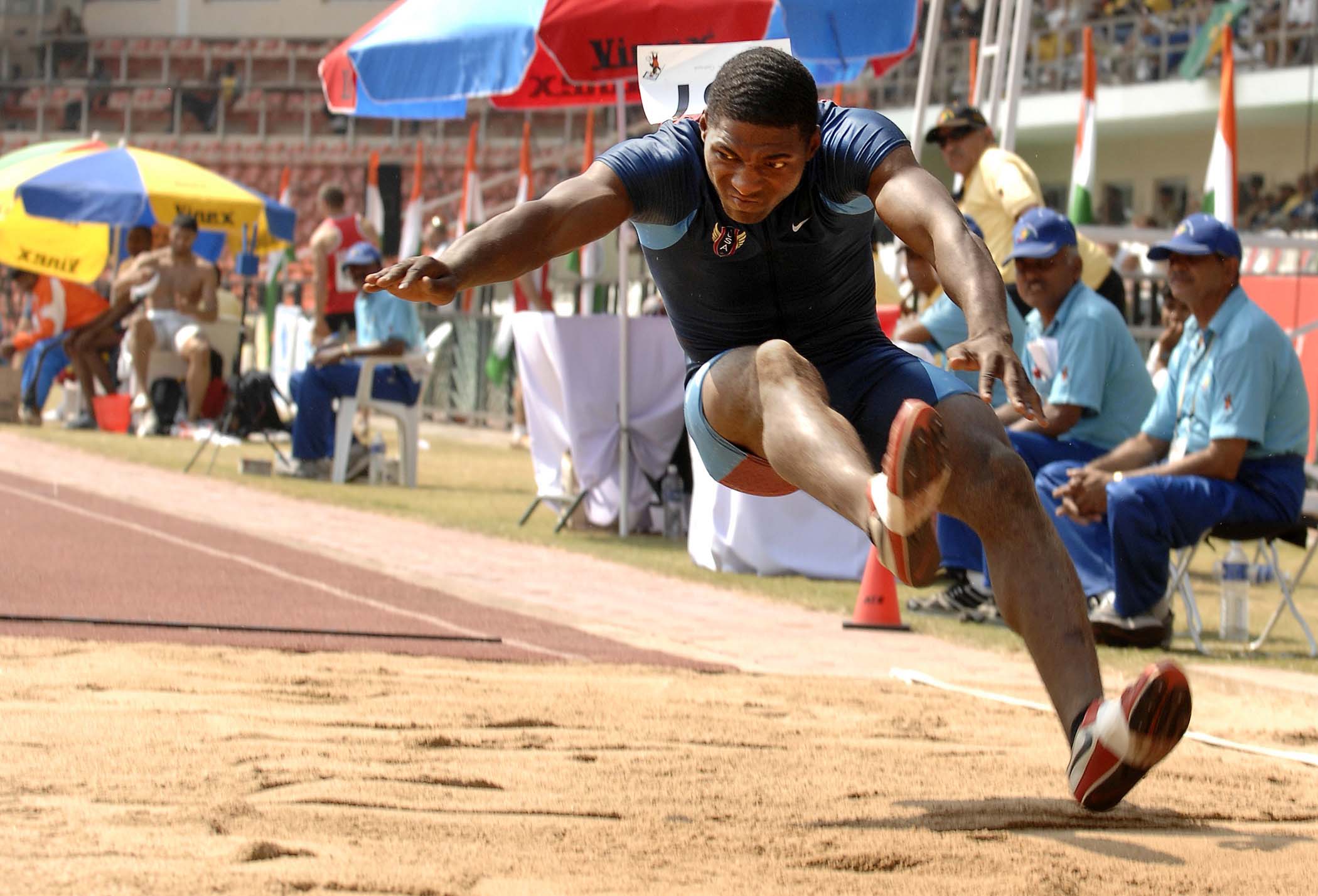|
2017 IAAF Diamond League
The 2017 Diamond League was the eighth season of the annual series of outdoor track and field meetings, organised by the International Association of Athletics Federations (IAAF). It is the first to feature the new championship-style system in which overall event winners are determined only by the results of the final meet. Changes The Diamond League's format was completely overhauled for the 2017 edition. The Diamond Race system used in previous years, in which athletes accumulated points through the season with double points in the finals, was replaced with a championship-style format in which earlier meets act as qualifying meets for the finals; the top eight or twelve athletes, depending on the event, will qualify. The two final meetings are held at the end of the season in Zürich ( Weltklasse) and Brussels (Memorial Van Damme), with half of the 32 events contested in each final; the overall Diamond League championship in each event will be determined solely by the results o ... [...More Info...] [...Related Items...] OR: [Wikipedia] [Google] [Baidu] |
2016 Diamond League
The 2016 Diamond League was the seventh season of the annual series of outdoor track and field meetings, organised by the International Association of Athletics Federations (IAAF). The 2016 series saw three changes to the format. One of the two American meetings, the Adidas Grand Prix held in New York, was dropped from the calendar in favour of the Rabat Meeting in Morocco. This was the first meeting on the calendar to be held in Africa, which had previously been the only northern hemisphere continent not represented on the Diamond League. The second major change was an amendment to the point scoring system. The former model of four points for the winner, two for runner-up and one for third was overhauled with a broader points system giving ten to the winner, six the runner-up and progressively fewer points down to sixth place. The system of double points for the event finals was retained. A third change was the compression of the field events – throws and horizontal jumps allow ... [...More Info...] [...Related Items...] OR: [Wikipedia] [Google] [Baidu] |
5000 M
The 5000 metres or 5000-metre run is a common long-distance running event in track and field, approximately equivalent to or . It is one of the track events in the Olympic Games and the World Championships in Athletics, run over laps of a standard track. The same distance in road running is called a 5K run; referring to the distance in metres rather than kilometres serves to disambiguate the two events. The 5000 m has been present on the Olympic programme since 1912 for men and since 1996 for women. Prior to 1996, women had competed in an Olympic 3000 metres race since 1984. The 5000 m has been held at each of the World Championships in Athletics in men's competition and since 1995 in women's. The event is almost the same length as the dolichos race held at the Ancient Olympic Games, introduced in 720 BCE. World Athletics keeps official records for both outdoor and indoor 5000-metre track events. 3 miles The 5000 metres is the (slightly longer) approximate metr ... [...More Info...] [...Related Items...] OR: [Wikipedia] [Google] [Baidu] |
Suheim Bin Hamad Stadium
The Suheim bin Hamad Stadium (), also known as Qatar SC Stadium, is a multi-purpose stadium in Doha, Qatar. It is currently used mostly for football matches and home of the football team Qatar Sports Club. History The stadium was opened 1985 and holds 13,000 people. In 2010, it hosted the Qatar Athletic Super Grand Prix, the first meeting of the 2010 Diamond League The 2010 Diamond League season was the first season of the Diamond League, an annual series of fourteen one-day track and field meetings. The series began on 14 May in Doha, Qatar and ended on 27 August in Brussels, Belgium. Superseding the Europe .... Some of the matches from the 2011 AFC Asian Cup were held in this stadium. In March 2014, it was announced that the stadium would host the 2015 IPC Athletics World Championships. References External linksSoccerway Profile AFC Asian Cup stadiums Football venues in Qatar Sports venues in Doha Qatar SC Multi-purpose stadiums in Qatar Al-Sailiya SC Diamond ... [...More Info...] [...Related Items...] OR: [Wikipedia] [Google] [Baidu] |
Doha Diamond League
The Doha Diamond League is an annual one-day track and field meeting held at the Suheim bin Hamad Stadium in Doha, Qatar. It is part of the Diamond League – the top level international circuit for the sport. It is typically held in May as the first leg of the Diamond League series. It was first organized in 1997 as the Doha Grand Prix as a men's only programme before adding women's events the following year. The competition gained IAAF Grand Prix The IAAF Grand Prix was an annual, global circuit of one-day outdoor track and field competitions organized by the International Association of Athletics Federations (IAAF). It was created in 1985 as the IAAF's first seasonal track and field circ ... II status for its second edition in 1998, then Grand Prix I status in 1999, and became one of the five IAAF Super Grand Prix events in 2004. The name of the meeting has frequently changed to match the athletics series of which it is a part. The meeting was not held in 2000 (with the s ... [...More Info...] [...Related Items...] OR: [Wikipedia] [Google] [Baidu] |
Javelin Throw
The javelin throw is a track and field event where the javelin, a spear about in length, is thrown. The javelin thrower gains momentum by running within a predetermined area. Javelin throwing is an event of both the men's decathlon and the women's heptathlon. History The javelin throw was added to the Ancient Olympic Games as part of the pentathlon in 708 BC. It included two events, one for distance and the other for accuracy in hitting a target. The javelin was thrown with the aid of a thong ('' ankyle'' in Greek) that was wound around the middle of the shaft. Athletes held the javelin by the ''ankyle'', and when they released the shaft, the unwinding of the thong gave the javelin a spiral trajectory. Throwing javelin-like poles into targets was revived in Germany and Sweden in the early 1870s. In Sweden, these poles developed into the modern javelin, and throwing them for distance became a common event there and in Finland in the 1880s. The rules continued t ... [...More Info...] [...Related Items...] OR: [Wikipedia] [Google] [Baidu] |
Discus Throw
The discus throw (), also known as disc throw, is a track and field event in which an athlete throws a heavy disc—called a discus—in an attempt to mark a farther distance than their competitors. It is an ancient sport, as demonstrated by the fifth-century-BC Myron statue '' Discobolus''. Although not part of the current pentathlon, it was one of the events of the ancient Greek pentathlon, which can be dated back to at least 708 BC, and it is part of the modern decathlon. History The sport of throwing the discus traces back to it being an event in the original Olympic Games of Ancient Greece. The discus as a sport was resurrected in Magdeburg, Germany, by gymnastics teacher Christian Georg Kohlrausch and his students in the 1870s. Organized men's competition was resumed in the late 19th century, and has been a part of the modern Summer Olympic Games since the first modern competition, the 1896 Summer Olympics. Images of discus throwers figured prominently in advertis ... [...More Info...] [...Related Items...] OR: [Wikipedia] [Google] [Baidu] |
Shot Put
The shot put is a track and field event involving "putting" (throwing) a heavy spherical ball—the ''shot''—as far as possible. The shot put competition for men has been a part of the modern Olympics since their revival in 1896, and women's competition began in 1948. History Homer mentions competitions of rock throwing by soldiers during the Siege of Troy but there is no record of any dead weights being thrown in Greek competitions. The first evidence for stone- or weight-throwing events were in the Scottish Highlands, and date back to approximately the first century. In the 16th century King Henry VIII was noted for his prowess in court competitions of weight and hammer throwing. The first events resembling the modern shot put likely occurred in the Middle Ages when soldiers held competitions in which they hurled cannonballs. Shot put competitions were first recorded in early 19th century Scotland, and were a part of the British Amateur Championships beginning in 18 ... [...More Info...] [...Related Items...] OR: [Wikipedia] [Google] [Baidu] |
Triple Jump
The triple jump, sometimes referred to as the hop, step and jump or the hop, skip and jump, is a track and field event, similar to the long jump. As a group, the two events are referred to as the "horizontal jumps". The competitor runs down the track and performs a hop, a bound and then a jump into the sand pit. The triple jump was inspired by the ancient Olympic Games and has been a modern Olympics event since the Games' inception in 1896. According to World Athletics rules, "the hop shall be made so that an athlete lands first on the same foot as that from which he has taken off; in the step he shall land on the other foot, from which, subsequently, the jump is performed." The current male world record holder is Jonathan Edwards of the United Kingdom, with a jump of . The current female world record holder is Yulimar Rojas of Venezuela, with a jump of . History Historical sources on the ancient Olympic Games occasionally mention jumps of 15 meters or more. This led spo ... [...More Info...] [...Related Items...] OR: [Wikipedia] [Google] [Baidu] |
Long Jump
The long jump is a track and field event in which athletes combine speed, strength and agility in an attempt to leap as far as possible from a takeoff point. Along with the triple jump, the two events that measure jumping for distance as a group are referred to as the "horizontal jumps". This event has a history in the ancient Olympic Games and has been a modern Olympic event for men since the first Olympics in 1896 and for women since 1948. Rules At the elite level, competitors run down a runway (usually coated with the same rubberized surface as running tracks, crumb rubber or vulcanized rubber, known generally as an all-weather track) and jump as far as they can from a wooden or synthetic board, 20 centimetres or 8 inches wide, that is built flush with the runway, into a pit filled with soft damp sand. If the competitor starts the leap with any part of the foot past the foul line, the jump is declared a foul and no distance is recorded. A layer of plasticine ... [...More Info...] [...Related Items...] OR: [Wikipedia] [Google] [Baidu] |
High Jump
The high jump is a track and field event in which competitors must jump unaided over a horizontal bar placed at measured heights without dislodging it. In its modern, most-practiced format, a bar is placed between two standards with a crash mat for landing. Since ancient times, competitors have introduced increasingly effective techniques to arrive at the current form, and the current universally preferred method is the Fosbury Flop, in which athletes run towards the bar and leap head first with their back to the bar. The discipline is, alongside the pole vault, one of two vertical clearance events in the Olympic athletics program. It is contested at the World Championships in Athletics and the World Athletics Indoor Championships, and is a common occurrence at track and field meets. The high jump was among the first events deemed acceptable for women, having been held at the 1928 Olympic Games. Javier Sotomayor (Cuba) is the current men's record holder with a jump of set ... [...More Info...] [...Related Items...] OR: [Wikipedia] [Google] [Baidu] |
Pole Vault
Pole vaulting, also known as pole jumping, is a track and field event in which an athlete uses a long and flexible pole, usually made from fiberglass or carbon fiber, as an aid to jump over a bar. Pole jumping competitions were known to the Mycenaean Greeks, Minoan Greeks and Celts. It has been a full medal event at the Olympic Games since 1896 for men and since 2000 for women. It is typically classified as one of the four major jumping events in athletics, alongside the high jump, long jump and triple jump. It is unusual among track and field sports in that it requires a significant amount of specialised equipment in order to participate, even at a basic level. A number of elite pole vaulters have had backgrounds in gymnastics, including world record breakers Yelena Isinbayeva and Brian Sternberg, reflecting the similar physical attributes required for the sports. Running speed, however, may be the most dominant factor. Physical attributes such as speed, agility and stre ... [...More Info...] [...Related Items...] OR: [Wikipedia] [Google] [Baidu] |
100 M Hurdles
The 100 metres hurdles, or 100-meter hurdles, is a track and field event run mainly by women (the male counterpart is the 110 metres hurdles). For the race, ten hurdles of a height of are placed along a straight course of . The first hurdle is placed after a run-up of 13 metres from the starting line. The next 9 hurdles are set at a distance of 8.5 metres from each other, and the home stretch from the last hurdle to the finish line is 10.5 metres long. The hurdles are set up so that they will fall over if bumped into by the runner, but weighted so this is disadvantageous. Fallen hurdles do not count against runners provided that they do not run into them on purpose. Like the 100 metres sprint, the 100 m hurdles begins with athletes in starting blocks. The fastest 100 m hurdlers run the distance in a time of around 12.5 seconds. The world record set by Tobi Amusan stands at 12.12 seconds. History The race started back in the 1830s in England where wooden barriers were placed a ... [...More Info...] [...Related Items...] OR: [Wikipedia] [Google] [Baidu] |





